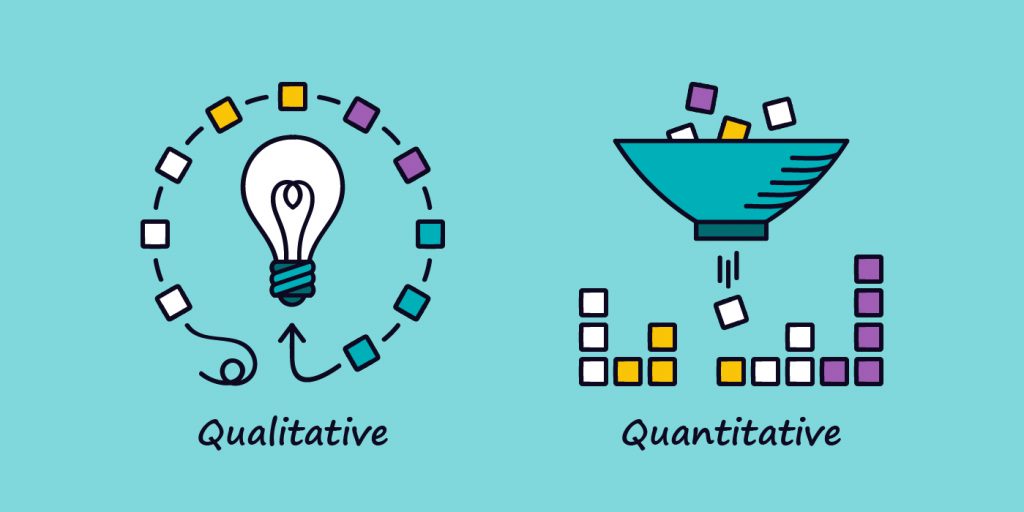What is Data Transcription? Qualitative Data Transcription
Qualitative data transcription
The word “data” has lots of connotations. The first thing that comes to the minds of most average people when they hear it are numbers and statistics. Some might even imagine a robot doing some sorts of calculation. To take it one step further, we can say that for sure some people associate the term “data” with the fictional Star Trek franchise since one character of the series is named Data. He chooses his own name due to his love for knowledge and on top of that he has a positronic brain which gives him impressive computational capabilities. Those connotations that come to our minds are all on the right track, but of course, the term is a little bit more complex. First of all, when we are talking about data, we need to mention that we differentiate between quantitative and qualitative data which are collected and used in qualitative and quantitative research. So, let us go a bit into details here.
Data that is shown in the form of numbers and which can be properly measured is called quantitative data. In order to conduct a quantitative research a large body of subjects is necessary. Math and statistics play an immense role in quantitative research, since the objective here is to put numerical assignments to findings. Quantitative researchers ask questions like “how many?” or “how the data correlate with each other?”. For example, some quantitative research questions might be: What is the demographic makeup of Memphis in 2020? How has the average temperature changed in the United Stated over the last two decades? Does remote work decrease productivity?
On the other hand, we also have data which goes under the term qualitative dana. Qualitative research isn’t shown in numbers, but it is conveyed in words. It is neither evaluated in a rigorous way nor it contains statistical information and it is certainly less objective than quantitative research. The main goal of qualitative data is to describe aspects or the nature of something or to gain a stronger understanding of a subject. For example, qualitative data gives an insight into people’s motives: why are they acting a certain way or why they have a certain attitude. Sometimes qualitative data are simply points of view or judgments. A quantitative research might for example answer questions like: How does Hollywood affect the body image in teenagers? How do children interpret a healthy diet in Chicago? In fact, quantitative research can be of great help for doctors, psychologists or scientists in order to get a grasp at why patients choose a certain life style or how they behave if they have a certain disease. Quantitative data is also a very helpful source of information for many companies, since they can help to analyze the preferences of their customers.

So, let’s now take a look at the question: why should you transcribe qualitative data?
As we already said, qualitative research isn’t about finding an ultimate, absolute, specific answer, since the possibility to measure qualitative data in the way we measure quantitative data doesn’t exist. Qualitative research is mostly done when there is a need to explore a subject or a problem and it zooms in on individuals or on whole societies. So, what are some of the methods used to collect qualitative data? Observation, surveys, interviews and focus groups are usually the way to go. Today, we will focus on the following two methods:
- Interviews – This method consists of researchers making conversation with examinees while asking them questions.
- Focus groups – In this method researches are asking questions to entice a discussion among a group of examinees.

The advantage of interviews and focus groups is that examinees have more freedom to express themselves, share information with researchers in their own words and are given the opportunity to elaborate in a way that is not possible with let’s say surveys when they are choosing among three to five already predetermined answers. Also, interviews and focus groups entitle the researcher to ask sub-questions so a topic can be explored in much more depth than with other methods.
One of the biggest drawbacks of those methods is that it sometimes difficult to document them. The problem is that even the most attentive researcher hasn’t the ability to write down notes of everything that has been said during an interview or a discussion. On top of that, if they are taking notes, it is less likely that they will be observant enough and focus on the examinees in the way that they should. That is why most of the time researchers record the interviews and discussions and, in the end, they have a video or audio file with key information. It allows researchers to focus on the interaction with the examinees, they are not distracted and it is way more convenient for them.
However, audio and video recordings also bring some problems with them. One of them is that it is often hard to make heads or tails out of the recorded content. So, what can be done to solve this? First of all, someone needs to properly structure all the remarks, answers and opinions of the examinees. This is where transcriptions can play a very important role. If researchers transcribe a video or an audio record, they will still have the whole content of the recording, but in a written form. So, the qualitative data are going to be in front of them, black on white. When they are done with this step, they have the base of their research. We can say that a very exhausting part of the task is completed and from here on, structuring data in a systematic way is going to be easier. This will leave the researchers the possibility to be engrossed into the results and their observations rather than making notes and constantly flipping through a record by rewinding or fast-forwarding it. Furthermore, a transcript is much more reliable than mere notes, not to mention that it is also going to be easier to share a specific information from a written document, since you won’t have to share the whole recordings but you can simply copy-paste a paragraph or two. Last but not least, the content will get a concrete form and it is going to be simple to follow a certain pattern through it. Important information can easily be sorted out and inserted into an operating tool for them to be collected and compared with each other, and in the end, they are used to conduct inductive analysis (developing a theory) or deductive analysis (testing an existing theory). This will make it possible to get meaningful results and come up with conclusions which later on can be presented in the form of a study, article or report.
Choose Gglot as your transcript service provider
Conducting a qualitative data research can be a challenging task. It requires lots of dedication: researchers need to collect the data, structure and analyze them and in the end, they need to draw a conclusion and present it in form of a scientific document. It is indeed a process that takes up time and energy.
If you are a researcher and need to get to your results fast, or if you just want to make your job less complicated, but in at the same time you don’t want to compromise the outcome or the quality of the results, we suggest that you implement transcribing as a step in your qualitative research. The good thing is that this is a step you can (and you should) outsource. If you give your records into the hands of professional transcription service provider you will have more time to dedicate to other, more important steps in your research. At the same time, you can have faith that you will get the accurate original content back, just in another, more convenient form.
The process of ordering a transcript at Gglot is very user friendly for our customers. All you need to do is to upload your audio or video recordings and some information that you foresee might be of help to the transcribers (like the names of the speakers or explanations of some not so very well-known terms). Before we send you the transcripts back, you will have the possibility to go through them and edit some parts if needed.
Transcriptionist at Gglot are native English speakers and they are carefully chosen since our quality requirements are high. We work with trained professionals who will transcribe your documents up to details in a short period of time. Delivery time of course various depending on the quality and the length of the audio or video file.
It is also important to outline that you can trust us with your documents: confidentiality plays a great role at Gglot. Thus, members of our team need to sign a Non-disclosure agreement if they want to work with us.
That all being said we can only repeat once more that a good transcription can be a real lifesaver for quality data researchers. Try our services and find out for yourself.